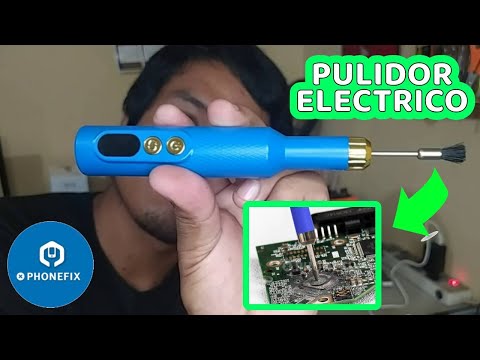Have you ever wondered how to quickly repair an iPhone 12 that won't turn on? Recently, a user reported that their Apple iPhone 12 couldn't boot up after being dropped on the ground. There was no reaction even when the data cable was plugged in. Don't panic! In this blog post, the China Phonefix team will guide you through the step - by - step process of diagnosing and potentially fixing this frustrating issue.
Since the iPhone 12 stopped working after being dropped, we need to consider the possibility of other problems caused by poor soldering in the iPhone motherboard's middle layer. Therefore, in the following repair steps, we will first separate the motherboard layers to check for faults. Here are the specific steps.
Step 1: Disassembly of the Phone:
The first step in troubleshooting an iPhone 12 that won't boot up is to carefully disassemble the device. You'll need a set of precision phone repair tools, including a pentalobe screwdriver to remove the screws at the bottom of the phone. Once these are removed, use a plastic opening tool to gently pry open the back cover. Be extremely cautious during this process to avoid damaging any of the delicate internal components. This disassembly allows you to access the internal parts of the iPhone 12, which is essential for further inspection.
Step 2: Disassembly of the Motherboard:
We directly disassembled it and removed the iPhone motherboard. We located and disconnected all the cables attached to the motherboard. These cables usually connect the battery, display, camera, and other components to the motherboard. We used a spudger or tweezers to carefully lift the connectors and detach the cables.
We removed any screws that were holding the motherboard in place. These screws may vary in size and type, so make a note of their sizes and types.
After removing the screws, we gently lifted the motherboard out of the phone's frame.
Step 3. Checking for Short - Circuits and Measuring Values:
Next, we check if there is a short - circuit in the iPhone battery and the main power supply. After a careful inspection, we find that the phone wasn't damaged very severely, and there are no dents on the shielding cover. Then we power on the motherboard directly. When we press the power button, we notice that the current doesn't change at all. Using a digital multimeter, we measure the resistance of the power - on socket, and it turns out to be normal. When we measure the voltage of the power - on button while powering on, there is no 1.8V voltage; in fact, there is no voltage at all. Could it be a power supply problem? 
Step 4. iPhone Motherboard Layering:
We first suspect the crystal oscillator. The crystal oscillator of the iPhone 12 is cleverly designed; it is located at the farthest corner, behind the camera socket, on the back of the upper motherboard from the power supply. We also need to consider the possibility of other problems caused by poor soldering in the middle layer, so we directly separate the motherboard layers.
Before delaminating the motherboard, we need to use a heat gun or a hair dryer on a low - heat setting to warm up the motherboard gently. This helps to soften the adhesive between the layers. Once the adhesive is softened, use a plastic opening tool or a spudger to carefully separate the layers. Start from one corner and work your way across the motherboard.
Be careful not to damage any of the traces or components on the motherboard layers during the separation process.
Step 5. Component Replacement and Soldering:
When we finished the motherboard layering, we found that the missing solder points were not too serious. However, a corner of the crystal oscillator had come loose. We added some soldering flux and removed the crystal oscillator. As expected, there was a missing solder joint at one corner of the crystal oscillator.
Although the missing solder points don't seem to have had an impact, it's obvious that the crystal oscillator was poorly soldered. We added some solder to the pads of the crystal oscillator, reinstalled the crystal oscillator, and applied some green oil to secure it. Then, when we powered on the motherboard again and measured the voltage of the power - on button, the voltage was already 1.6V. When we pressed the power button, the current jumped normally.
Repair Result: We installed the motherboard back into the phone and conducted a booted test. The phone boots up normally and entered the system. We also tested functions such as charging, Wi - Fi, sound, compass, vibration, and phone calls, and they all work properly. The repair is now complete.
In this case, the issue of the iPhone 12 not turning on was caused by a drop - induced poor soldering of the crystal oscillator. By carefully inspecting the iPhone parts, separating the motherboard layers, and performing necessary soldering and reinstallation operations, we were able to successfully repair the phone.
This shows that when dealing with the problem of an iPhone not turning on caused by physical impacts, a systematic and detailed inspection process is crucial. Technicians should consider various possible causes, especially the components that are likely to be affected by the impact, such as the crystal oscillator and the motherboard's middle - layer soldering. If you are looking for a reliable source of iPhone repair tools and iPhone parts, check out Phonefix Stores. With the right phone repair tools and techniques, most of these problems can be resolved effectively.
Speedy Resolution of the iPhone 12 Not Turning On Malfunctions












